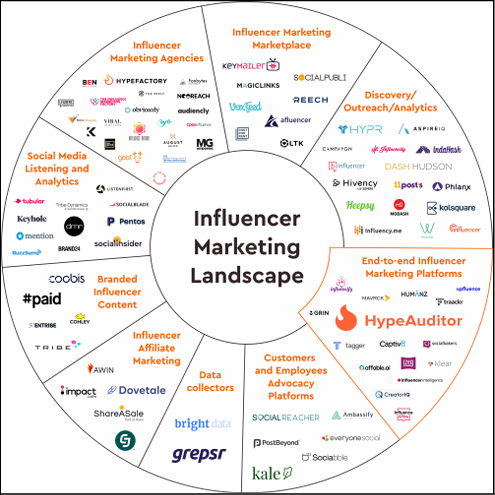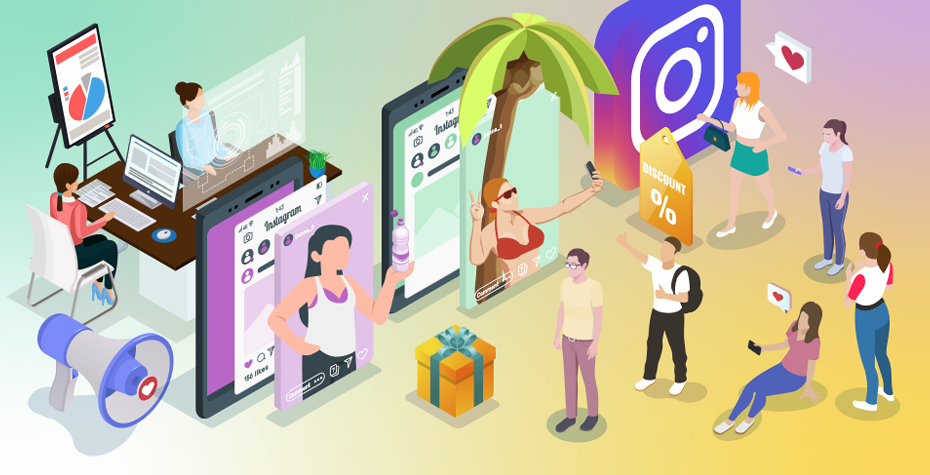Influencer Marketing: A New Era of Brand Connections
As digital marketing continues to evolve, influencer marketing is emerging as a subtle yet powerful tool for brands. With growing skepticism towards traditional ads and the rise of ad-blockers, influencers offer a fresh approach by building authentic connections with their audiences. Through partnerships with celebrities, athletes, and niche experts, brands can engage with highly interested communities in a more genuine and effective way. Read more to know how influencer marketing is significantly transforming the landscape of brand communication.
The Current Landscape of Influencer Marketing
The power of influencer marketing lies in its capacity to connect with active communities on social media platforms such as Instagram, YouTube, TikTok, and LinkedIn, enabling brands to interact with highly interested and engaged consumers. Influencer marketing now spans every sector—technology, finance, food, and travel—with brands like Coca-Cola, Nike, and Apple using it to strengthen brand loyalty.
What’s particularly intriguing is the rise of micro-influencers—those with 10,000 to 100,000 followers—who offer impressive engagement rates and specialized audiences. Research indicates that these smaller influencers can achieve up to 60% higher engagement compared to their larger counterparts.
Future Trends in Influencer Marketing
- Micro Influence: The future of influencer marketing is moving towards micro and nano influencers with smaller, more engaged followings within specific niches.
- Short-Form Video Dominance: Platforms like TikTok and Instagram Reels will continue to drive trends with brief, impactful video content.
- Long-Term Partnerships: Instead of one-off promotions, brands will invest in longer-term relationships with influencers for deeper, sustained connections.
- Data Analytics: Data-driven campaigns are on the rise, allowing brands to use big data and analytics to target the right influencers, predict campaign outcomes, and optimize their strategies in real time.
- Regulation and Transparency: As influencer marketing grows, stricter regulations are being enforced to ensure clear disclosure of sponsored content and truthful claims.
- Diversification of Platforms: While Instagram and YouTube lead, newer platforms like TikTok and Clubhouse are gaining popularity, offering fresh opportunities for engaging diverse audiences.
Real-Life Examples of Influencer Marketing
Indian entrepreneur and fashion influencer Masoom Minawala collaborates with top brands like Dior, Gucci, and Louis Vuitton. Through social media, she offers fashion tips and lifestyle content, building a large following and helping global brands connect with the Indian audience in a culturally relevant way.
Ankur Warikoo, a prominent Indian entrepreneur and motivational speaker, shares business insights, productivity strategies, and career advice on Instagram and YouTube. He has collaborated with platforms such as UpGrad and CRED to endorse educational and financial services.
NordVPN, a virtual private network, focused on the macro-influencer program and secured some of the biggest names as their ambassadors. It relies heavily on influencer marketing on YouTube — 85.3% of Nord VPN's social traffic comes from there.
Challenges and Considerations
1. Maintaining Authenticity: As influencer marketing grows, consumers are increasingly skeptical of inauthentic or overly commercial content. Brands and influencers need to stay genuine and align their messages with their audience's true values and interests.
2. Measuring ROI: Influencer marketing can be highly profitable, but accurately measuring ROI is complex due to factors like engagement rates and platform algorithms. Brands need strong analytics tools and clear KPIs to assess campaign success effectively.
3. Navigating Regulations: With growing regulatory scrutiny, brands and influencers must follow advertising guidelines and clearly disclose sponsored content to avoid fines and reputational damage.
Conclusion: The Future is Influencer-Driven
Influencer marketing is here to stay and it’s shaking up how brands connect with us. As we crave more authentic and personalized experiences, this marketing trend is evolving fast—getting smarter with data and integrating seamlessly into broader strategies.
What does this mean for the future? Simply put, influencer marketing is set to get even better. With people trusting genuine recommendations from their favorite influencers, this approach isn’t going anywhere.
In a nutshell, the future of marketing is undeniably influencer-driven, and it’s going to be exciting to see where it goes next!



The Rise of Influencer Marketing